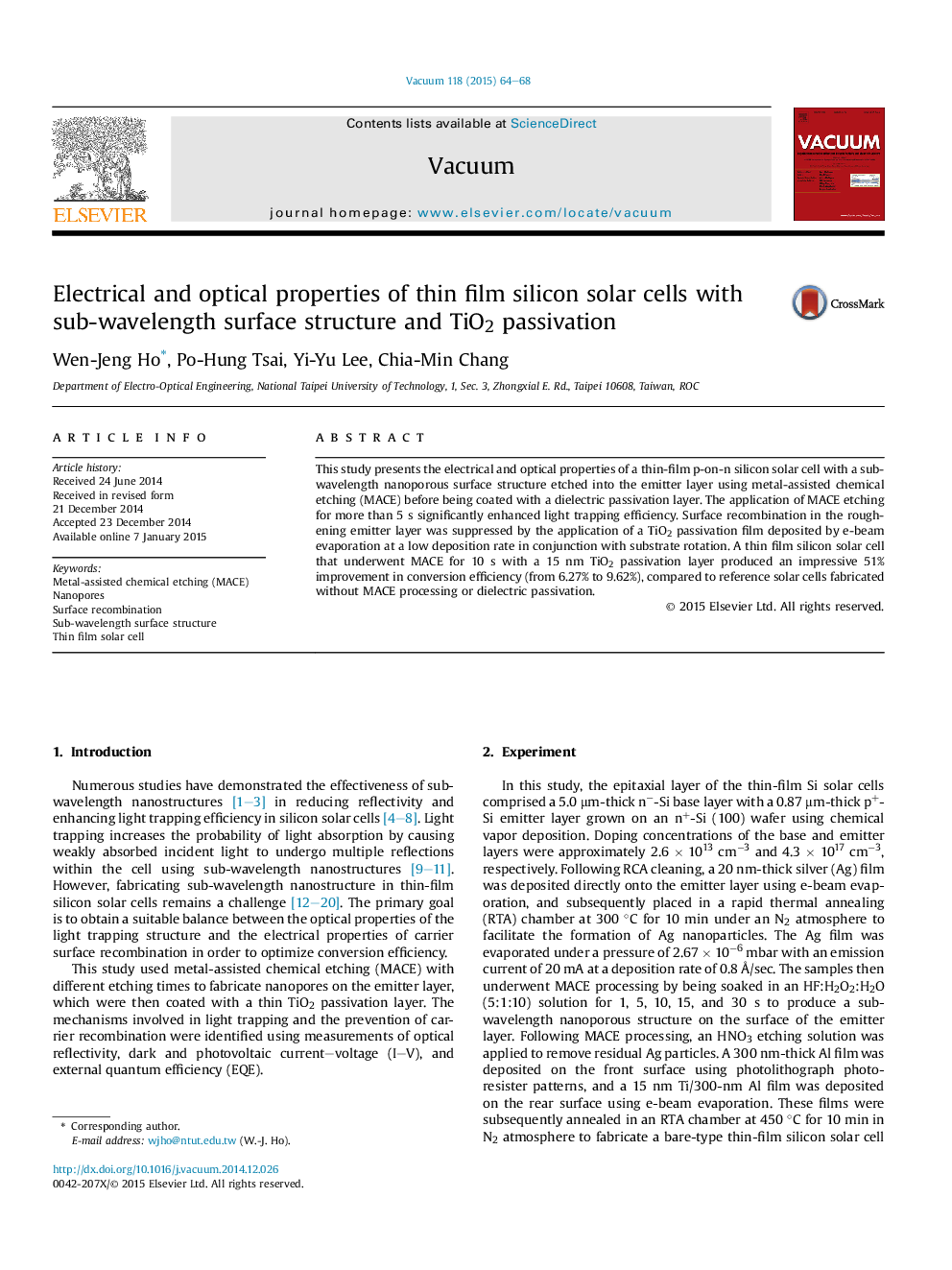| Article ID | Journal | Published Year | Pages | File Type |
|---|---|---|---|---|
| 1690178 | Vacuum | 2015 | 5 Pages |
Abstract
This study presents the electrical and optical properties of a thin-film p-on-n silicon solar cell with a sub-wavelength nanoporous surface structure etched into the emitter layer using metal-assisted chemical etching (MACE) before being coated with a dielectric passivation layer. The application of MACE etching for more than 5Â s significantly enhanced light trapping efficiency. Surface recombination in the roughening emitter layer was suppressed by the application of a TiO2 passivation film deposited by e-beam evaporation at a low deposition rate in conjunction with substrate rotation. A thin film silicon solar cell that underwent MACE for 10Â s with a 15Â nm TiO2 passivation layer produced an impressive 51% improvement in conversion efficiency (from 6.27% to 9.62%), compared to reference solar cells fabricated without MACE processing or dielectric passivation.
Related Topics
Physical Sciences and Engineering
Materials Science
Surfaces, Coatings and Films
Authors
Wen-Jeng Ho, Po-Hung Tsai, Yi-Yu Lee, Chia-Min Chang,
